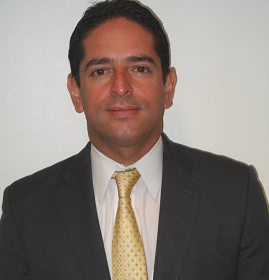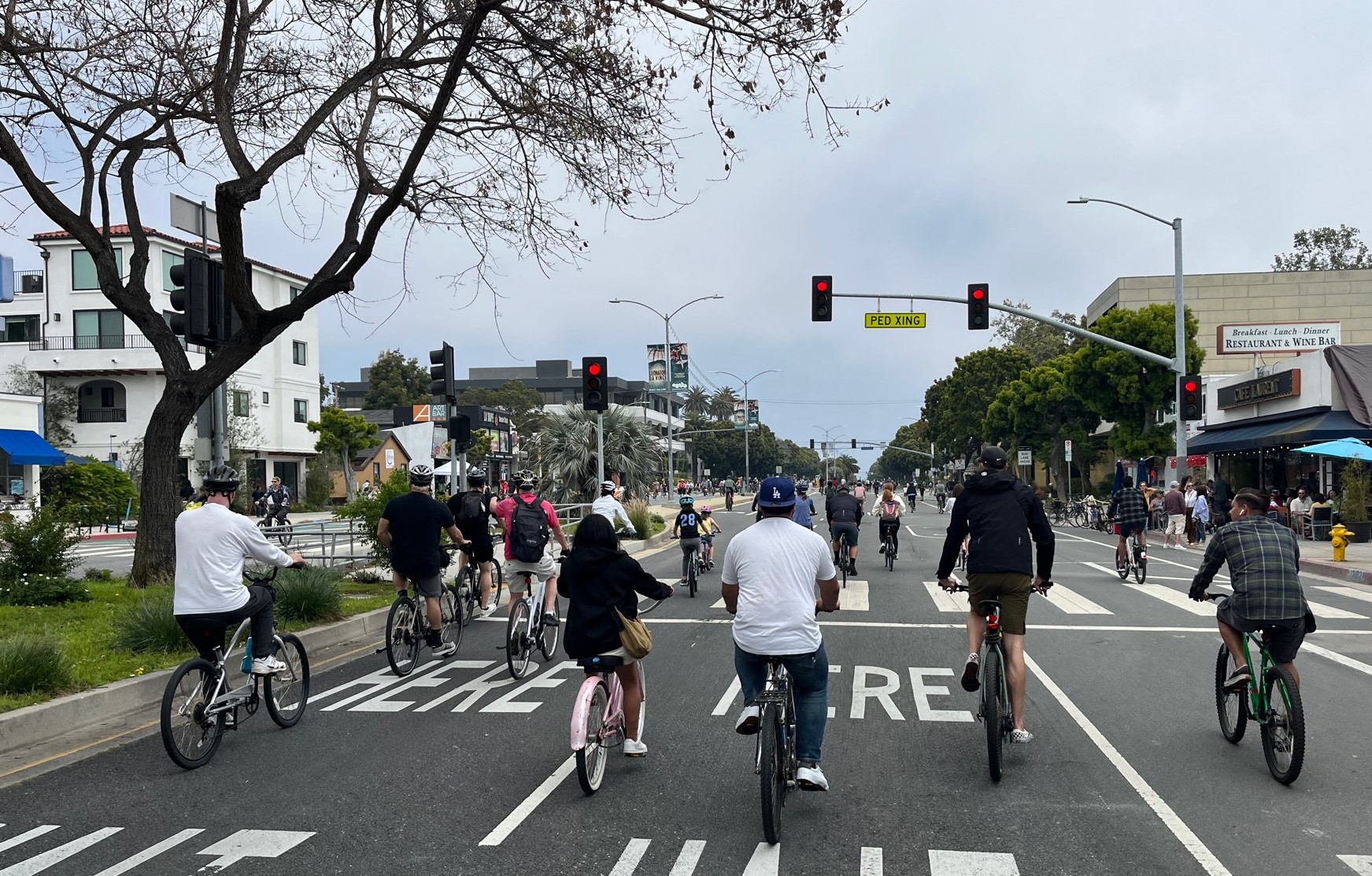Reader Q and A: Deputy Mayor Borja Leon Responds
6:53 AM PDT on August 23, 2011
You asked, and Los Angeles' new Deputy Mayor for transportation, Borja Leon, responded. Leon took over as Deputy Mayor when his predecessor, Jaime De La Vega, was named General Manager of the Los Angeles Department of Transportation.
This "online interview" marked only the second time in this series where I worked directly with the interviewee the entire time and not public relations staff.
1. The actual question was "what kind of hummer do you own" but I've decided to interpret that as, "tell us something about your commute. Do you ever ride the bus, train, or even bike as part of your commute?
I have used public transportation my entire life. While growing up I lived in Europe and South America, using both subways and buses to get around. As you probably know, public transportation is a way of life in other countries.
My grandfather ran a bus operations company 50 years ago in northern Spain. It was a family practice and the fleet grew to about 20 buses. He was the first one to provide bus service in his town and thousands of people rode it each year.
I take an express bus to work three or four times a month. I would like to take transit more often but can’t due to my schedule -- so I appreciate some of the difficulties many other people have. When I have meetings outside of City Hall, I typically ride the DASH bus or use Metro buses or trains.
2. Do you have any plans for how you're going to spend the day on October 9, the third CicLAvia?
Funny you ask. Jaime de la Vega, the General Manager of the city’s Department of Transportation, and I plan take our bikes and ride CicLAvia with our family and friends. I’ll probably ride the Blue Line from Long Beach and start riding at the San Pedro station in downtown L.A. The third CicLAvia features new spurs that push the route into the southeast part of downtown, in addition to the Gold Line station in Chinatown. Jaime plans to take the Orange Line and Red Line in from the San Fernando Valley. We’ll meet downtown and spend the day riding and checking that everything is going smoothly. We also expect to have a lot of fun that day. I hope that everyone reading this joins us.
3. If you could change one thing about transportation in Los Angeles with the wave of a magic wand, what would it be?
I would create a sophisticated -- and often underground -- transit network that would connect people to their destinations at very high speeds. This obviously would require a huge investment dollar-wise and it would have to be planned carefully. The major stations would be surrounded by transit oriented developments featuring both residential and commercial properties. Since I have that wand in my hand and could do anything, I would also make the system free. This system would have the capacity to serve everyone in Los Angeles -- and everyone in the Los Angeles region would want to use it because it would be the fastest way to get around. Ideally, this could tie in to a regional high speed transit network where you can travel to and from other parts of the state and country in a matter of minutes and/or hours. The wait times would be minimal and the certainty in getting to your destination would be 100% on-time.
4. There's some talk of Metro investing in a bike share program. Do you think L.A. has the necessary infrastructure to support such a system?
The Mayor’s Office is working with city departments, Metro and other agencies to lay the groundwork for a bike share program in Los Angeles. In many ways, bike share is a natural fit for the city. We have a plan to increase the miles of bikeway facilities in the city, we have almost perfect bicycling weather, and there is pent-up demand for cycling opportunities -- as CicLAvia and the L.A River ride have demonstrated. A bike share program would also send the message to residents that the city is serious about becoming as bike friendly as possible. We want people to be able to seriously consider commuting by bike.
That said, infrastructure is undoubtedly a key component to any successful bike share program and we need to keep expanding it. At this time, studies have shown there are a few neighborhoods that have the density and transit resources to support it -- for example, downtown L.A., Hollywood and Westwood. These are also among the areas that are slated for significant bike lane improvements in the city’s bike plan.
Earlier this month, the Metro Board approved a motion by Supervisor Zev Yaroslavsky, Santa Monica Council Member Pam O’Connor and the Mayor to explore opportunities for a bike share program at strategic locations at our rail and bus stations. This motion focused on taking on a regional approach to a bike share program.
5. Currently L.A. has a different model for CicLAvia than other cities do with their open street events in that a non-profit is heavily involved with, and in some places in charge of, the planning, fundraising, event programming, route planning for the event. Is there any thought that the city might one day take over?
The partnership that exists between the City and CicLAvia, a non-profit, is one of the event’s strongest aspects, and there aren’t any plans to change this. Having a community partner so heavily involved in the planning and organizing of the event ensures that it remains open and responsive to new ideas from Angelenos. An example: the expansion of the route for the October event. There will be more room for new participants and more neighborhoods will get to participate in the event. Personally, I am excited to see how the event will evolve in the coming months and years, and the City-Ciclavia partnership is key to this continuing evolution. And, quite frankly, in a time of limited resources at the city, a partnership is the best way to ensure the event remains viable.
6. Outside of the dramatic increase in the TIFIA loan program, what is the next major part of America Fast Forward that you wish to see incorporated into federal law or policy?
Tax Credit Bonds. In short, they’re bonds that provide tax credits to investors -- giving them an incentive to buy the bonds. Equally important, the issuer of the bonds -- such as a local transit agency -- gets federal help paying the interest on the bonds.
Tax credit bonds combined with the TIFIA loans would provide us with the up-front money we need to build Measure R projects in the next decade. It’s also important to note that America Fast Forward, if it becomes law, would also greatly broaden the market for infrastructure financing across the nation.
Bottom line: Metro and many other large transit agencies could quickly access the big dollars they need to build pricey transit projects without having to repay insurmountable debt costs. We think it’s the best way to jump-start transit projects these days. It’s increasingly unlikely the federal government will simply give us the money to build.
Stay in touch
Sign up for our free newsletter
More from Streetsblog Los Angeles
Brightline West Breaks Ground on Vegas to SoCal High-Speed Rail
Brightline West will be a 218-mile 186-mile-per-hour rail line from Vegas to Rancho Cucamonga - about 40 miles east of downtown L.A. - expected to open in 2028
This Week In Livable Streets
Active Streets Mission-to-Mission, LAPD reports on its use of force in 2023, Pasadena Transit plans, Metro subway construction, and more
Eyes on the Street: Santa Monica Connection from E Line Bike Path to Downtown Is Almost Complete
“Always be closing gaps in your bikeway network.”
CicLAvia Opens Venice Boulevard – Open Thread
CicLAvia opened six miles of Venice Boulevard - from Culver City Station to Venice Beach





